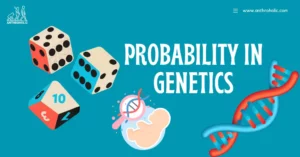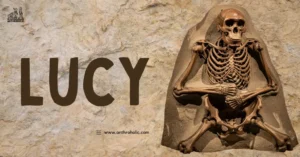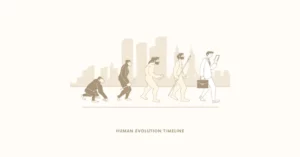AI Answer Evaluation Platform Live Now. Try Free Answer Evaluation Now
Radiocarbon Dating
Researchers employ radiocarbon dating to establish the age of biological objects that are up to 50,000 years old. Its foundation is the continuing creation of carbon-14, a radioactive isotope of carbon, in the Earth’s atmosphere by cosmic rays. Following this combination of carbon-14 and oxygen, plants absorb the carbon dioxide created during photosynthesis.

When animals ingest plants, the carbon-14 is subsequently absorbed into their tissues. When an organism dies, it stops absorbing carbon-14, and the carbon-14 that existed in its tissues begins to decay at a predetermined rate. By measuring the quantity of carbon-14 remaining in a sample and comparing it to the amount of carbon-14 that was initially present in the atmosphere, scientists may establish when a species perished.
Radiocarbon dating has been used to determine the ages of many items, including ancient bones, archaeological artifacts, and even the Shroud of Turin. This method has a number of limitations, including the fact that it can only be used to date formerly live materials and that accuracy falls with sample age.
How this technique came into existence?
In the late 1940s, American scientist Willard Libby pioneered the discovery of radiocarbon dating. Libby was especially interested in how the carbon cycle in the Earth’s atmosphere was connected to the creation and consumption of carbon-14 by living organisms.
In 1946, Libby proposed using carbon-14 to date artifacts from the ancient past, and he began devising a procedure for figuring out the proportion of carbon-14 in a sample. In the end, he and his colleagues created a way to detect the radiation generated by carbon-14 during its disintegration using a device called a Geiger counter. Libby’s radiocarbon dating method was first explored on materials like wood, charcoal, and shells. He was able to prove the correctness of the method and its capacity to provide dates to artifacts with an age of up to 50,000 years. Libby’s contributions to the development of radiocarbon dating garnered him the Nobel Prize in Chemistry in 1960. Today, radiocarbon dating is still used by archaeologists and other scientists to ascertain the age of old items.
Examples of materials that can be dated with radiocarbon dating
| Type of Material | Maximum Age that can be reliably dated |
|---|---|
| Wood | 10,000-12,000 years |
| Charcoal | 30,000-50,000 years |
| Bone | 30,000-50,000 years |
| Shell | 30,000-50,000 years |
| Peat | 10,000-50,000 years |
| Sediment | 50,000-100,000 years |
| Soil | 10,000-50,000 years |
| Ivory | 40,000-50,000 years |
| Coral | 30,000-50,000 years |
| Teeth | 50,000-100,000 years |
It’s important to note that these are just general ranges, and the actual age that can be determined for a specific sample will depend on a variety of factors, including the quality of the sample, the presence of contamination, and the calibration of the radiocarbon dating method.
Radiocarbon Dating can be used in various fields
Radiocarbon dating is a powerful tool for determining the age of organic materials, and it has wide-ranging applications in fields such as archaeology, geology, environmental science, forensics, and art history. By measuring the amount of carbon-14 in a sample and comparing it to the known rate of decay of carbon-14, radiocarbon dating can provide accurate and precise dates for materials up to about 50,000 years old. This has allowed researchers to gain new insights into the history of human civilization, the evolution of the Earth’s climate, the dynamics of ecosystems, and the authenticity of works of art, among other topics. In this context, let’s explore some of the various fields in which radiocarbon dating has been used, along with some notable examples.
| Field | Application | Example |
|---|---|---|
| Archaeology | Dating archaeological artifacts | Radiocarbon dating can be used to determine the age of ancient artifacts, such as pottery, tools, and jewelry. For example, radiocarbon dating was used to date the Stonehenge monument in England to around 2400-2200 BCE. |
| Geology | Dating geological formations | Radiocarbon dating can be used to date geological formations, such as caves and rock shelters. For example, radiocarbon dating was used to date the Altamira cave paintings in northern Spain to around 15,000-20,000 years ago. |
| Environmental Science | Studying past climate change | Radiocarbon dating can be used to study past climate change by dating materials that have been affected by climate, such as tree rings, corals, and ice cores. For example, radiocarbon dating of tree rings has been used to reconstruct past climate patterns and to calibrate other dating methods. |
| Forensics | Identifying the age of human remains | Radiocarbon dating can be used to determine the age of human remains, such as bones and teeth, in forensic investigations. For example, radiocarbon dating was used to determine the age of the remains of King Richard III of England, who died in 1485. |
| Art History | Authenticating works of art | Radiocarbon dating can be used to authenticate works of art by dating materials used in their creation, such as canvas, paper, and paint pigments. For example, radiocarbon dating was used to determine the age of the Turin Shroud, a piece of cloth believed by some to be the burial shroud of Jesus Christ. |
It’s important to note that radiocarbon dating can have limitations in some of these applications, and that other dating methods may need to be used in conjunction with radiocarbon dating to obtain more accurate results.
Limitations of radiocarbon dating
Radiocarbon dating has some limitations that can affect the accuracy and precision of the dates it provides. Some of the main limitations are:
- Limited age range: Radiocarbon dating can only be used to date materials up to about 50,000 years old, as the amount of carbon-14 remaining in a sample becomes too small to measure accurately beyond this point.
- Contamination: Radiocarbon dating requires careful sample preparation and handling to avoid contamination by carbon from other sources. Even small amounts of contamination can significantly affect the accuracy of the results.
- Calibration: Radiocarbon dating is based on the assumption that the amount of carbon-14 in the atmosphere has remained constant over time, but this is not always the case. Changes in the Earth’s magnetic field and other factors can cause fluctuations in the amount of carbon-14 in the atmosphere, which must be taken into account in order to calibrate the radiocarbon dating method.
- Biases: Radiocarbon dating can be biased by factors such as the type of material being dated, the location where the sample was found, and the method of sample collection. These biases can affect the accuracy and precision of the dates obtained.
- Sample size: Radiocarbon dating requires a relatively large sample size, which can be a limitation in cases where only small or precious samples are available.
Despite these limitations, radiocarbon dating remains a powerful tool for dating organic materials, and it has revolutionized our understanding of the past.
People Also Ask this about Radiocarbon Dating
Bibliography
- Bowman, S.G.E., 1995. Radiocarbon Dating. University of California Press.
- Brothwell, D.R. and Eric Higgs, E., 1963. Science in Archaeology: A Comprehensive Survey of Progress and Research. Thames & Hudson.
- Cook, G.T., Harkness, D.D. and McSweeney, K.M., 1998. Radiocarbon Dating: Interpretation of Results. Royal Society of Chemistry.
- Gove, H.E., 1999. From Hiroshima to the Iceman: The Development and Applications of Accelerator Mass Spectrometry. Institute of Physics Publishing.
- Taylor, R.E. and Aitken, M.J., 1997. Chronometric Dating in Archaeology. Plenum Press.
- Long, A. and Kra, R.S., 1978. Radiocarbon dating. Science, 201(4353), pp.939-944.
- Bowman, S., 1990. Introduction to Radiocarbon Dating. University of California Press.
- Stuiver, M. and Polach, H.A., 1977. Reporting of 14C data. Radiocarbon, 19(3), pp.355-363.
- Taylor, R.E., 1987. Radiocarbon Dating: An Archaeological Perspective. Academic Press.
- Renfrew, C. and Bahn, P.G., 1996. Archaeology: Theories, Methods and Practice. Thames & Hudson.




